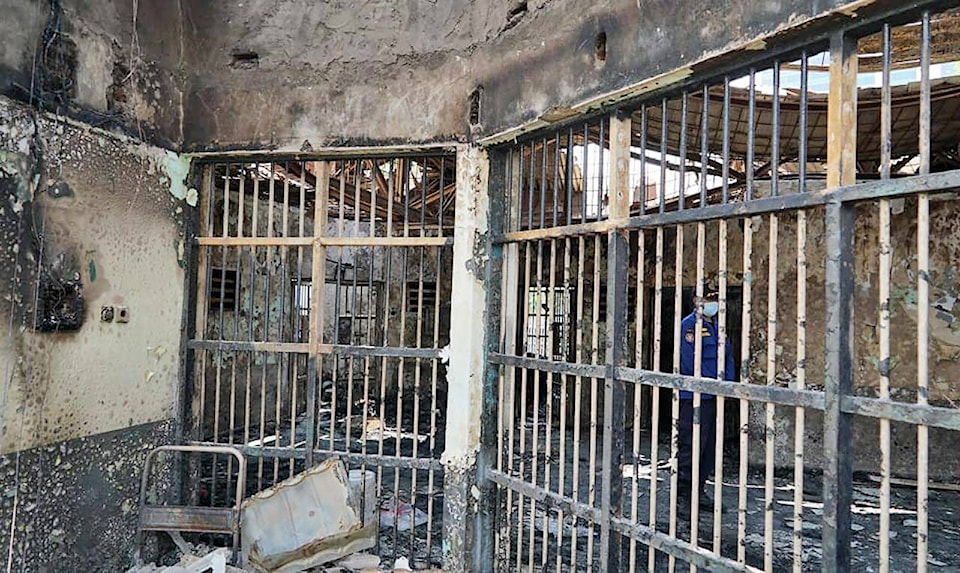Deadly Indonesia prison fire highlights systemic problems
JAKARTA, Indonesia (AP) — Overcrowding, mass escapes, protest riots, extremism and corruption: Indonesia’s prisons have long been a hotbed of problems. On Wednesday it was tragedy, as a fire ripped through a block of the Tangerang prison on the outskirts of Jakarta, killing 41 and injuring 80. Authorities say their initial investigation is pointing to an electrical short circuit as the cause of the blaze. Here is a look at some of the issues the prison system has faced in recent years:
OVERCROWDING, UNDERFUNDING AND UNDERSTAFFING
Tangerang prison was built to hold 900 prisoners but currently has more than 2,000. Block C, where the fire broke out early Wednesday, houses primarily drug offenders. Its 19 cells, meant to hold 40 inmates, had more than triple that.
More than half of the inmates in Indonesia’s prison system have been convicted for drug crimes. In an amnesty last year meant to reduce numbers as COVID-19 rampaged through the prisons early in the pandemic, the government released tens of thousands of people who had served at least two-thirds of their sentences.
According to the department of corrections, as of July there were 268,610 inmates in Indonesia’s prisons, which were built to hold 132,107 people.
An independent study in 2018 by University of Indonesia researchers found there was only one officer for every 55 inmates.
EXTREMISM
Following an Islamic extremist attack in 2002 on the tourist island of Bali when Jemaah Islamiyah militants bombed nightclubs, killing 202 people, mostly foreigners, Indonesian security forces embarked on a wide crackdown, crushing the network and arresting hundreds.
But once in prison, the lack of close supervision meant that they and other extremists were able to recruit more followers and direct supporters outside the walls.
Experts have noted that at least 18 former prisoners have been involved in extremist cases in the past decade, and most were radicalized in prison.
In the trial of Aman Abdurrahman, who was sentenced to death in 2018, the radical cleric was found to have incited and directed several attacks by his followers, including a 2016 suicide bombing at a Starbucks in Jakarta, while he was in prison. Abdurrahman, who was serving a terrorism-related sentence, was able to communicate with his supporters on the outside through visitors and video calls.
